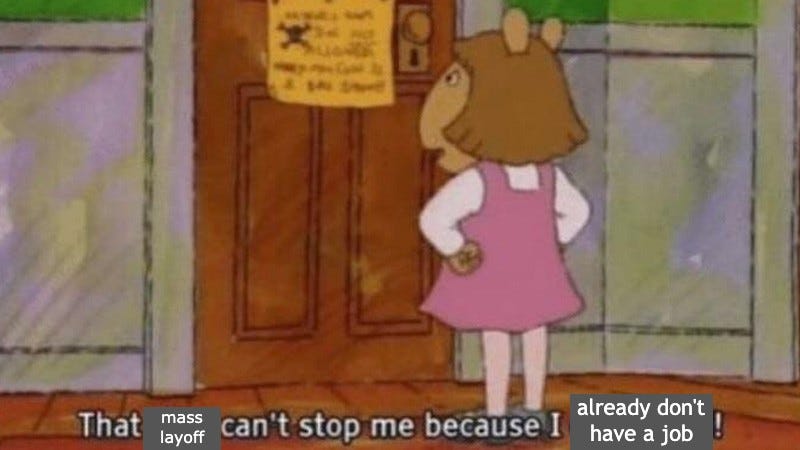The end of the digital media experiment
Welcome to Substack, y’all.
Embedded is your essential guide to what’s good on the internet, written by Kate Lindsay and edited by Nick Catucci.
If we’re all self-employed journalists now, is anyone??? —Kate
We’re at the end of a digital media experiment that started around 2010. Former NPR Music editor Cyrena Touros posted an exhaustive list of the 22 media outlets that laid off significant staff or simply shut down in 2023—a year we are only four months into—including ones that have enacted multiple rounds of layoffs. There are now hundreds if not thousands of journalists newly on the market, and let’s say four remaining outlets they can go to.
“The true story of digital media from 2010-2023 is one of megalomaniacal publishers and EICs taking investment money hand over fist to grow operations with no real way to make that money back,” Futurism EIC Foster Kamer wrote in a tweet that sounds right to me because those are big words and I don’t have any better answers.
I’m more interested what comes next. Responding to one round of layoffs this year, I made the following meme for my group chat:
What I meant was that “everything’s bad,” but while working for myself felt like a precarious leap at the beginning of the year, things have gotten so bleak in the industry that what started as a self-deprecating joke has actually turned into a small bit of comfort. I’m not saying everyone should go the journalist-as-individual-creator route—it takes time, work, privilege, and, not to mention, websites left to freelance for—but that it’s starting to feel like the only route left.
This time last year, established journalists were scoffing at the idea of becoming personalities or creators. It’s easy to do that when your job is not only secure but very well compensated. But younger journalists—those who joined the industry amidst its failing—have always had to be nimble and adaptable. When they lose their job and with it their income and their health insurance, they’re expected to do it with a “them’s the breaks!” attitude that was invented by the executives who’ve never had to lose anything. They had to mine their trauma for content, translate their ideas into listicles, sacrifice their reputations in pursuit of hot takes, pivot to video, pivot back, write 30-page slideshows for SEO—wait, don’t do that, that’s suddenly bad for SEO. And now we’re here. In the grand scheme of things, starting a Substack and getting on TikTok are just the latest entries in journalists’ long “this might as well happen” list.
As Casey Lewis astutely tweeted in response to Jonah Peretti’s predictions for the future of media and the internet (We should definitely keep asking this guy for his take! He’s proven to be very good at this!), journalists already have creator skills. I hope it’s obvious from this newsletter that I value the work of traditional internet creators, but reorienting your business around them instead of hiring experienced journalists to make your content is a perfect example of the logic that keeps fucking these outlets up.
But as happy as I am to be a self-employed journalist—something that is only possible thanks to the generosity of Embedded’s subscribers and my boyfriend’s health insurance plan—I don’t think a sustainable solution is to unleash all the journalists onto Substack and have us individually compete for eyeballs like some kind of very slow, pedantic Hunger Games. My solution is for a bunch of these writers to come together as one unit, all assigned specific roles and beats, and contribute to a well of diverse, interesting, and necessary content that people then pay to read. Hmmm, I wonder if anyone’s ever thought of trying this before…





Very very surprised to read "This time last year, established journalists were scoffing at the idea of becoming personalities or creators" -- I feel like journalists were forced into the "Creator" role in the early 2010s
this stresses me out so much but she's right your honor